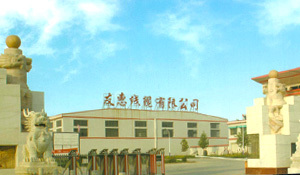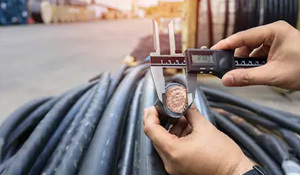How wire and cable companies achieve breakthrough innovation in management
Publication Time:
2019-06-08
For wire and cable companies, important management innovation should primarily be approached from several aspects. First, by rectifying attitudes, having a proactive mindset, not waiting or relying on others, but taking initiative. Currently, the pace of new product development for wires and cables is very fast, the product lifecycle is increasingly shortening, and new fields and challenges encountered are growing.
In any industry, management is the cornerstone of enterprise development and an eternal topic for businesses. Wire and cable companies are no exception. As a manufacturing industry, management is particularly important, directly affecting a company's profitability and profit levels. Therefore, every wire and cable company attaches great importance to management. No single management approach is universal; it must constantly evolve with changes in the market environment, which necessitates continuous management innovation. Innovation is the primary driving force for the progress of modern enterprises, a decisive factor in enhancing core competitiveness, achieving leapfrog development, and realizing sustained growth.
For wire and cable companies, important management innovation should primarily start from several aspects. First, it's crucial to correct attitudes, have a proactive mindset, not wait or rely on others, but take the initiative. Currently, the speed of new product development for wire and cables is very fast, product lifecycles are shortening, and more new areas and challenges are being encountered. How to determine technical requirements? How to address special requirements? Where are the standards? Many of these are new problems unique to China, where industry and national standards have not yet been issued, and relevant international standards do not cover these conditions. Waiting, relying, or requesting help offers no hope; companies must take the initiative, prioritize standards, formulate enterprise standards to ensure product quality, and meet customer requirements. Compared to enterprise standardization in the planned economy era, the responsibility for enterprise standardization is now greater; companies must urgently establish enterprise standards to guide product development and production.
In recent years, news about wire and cable product quality issues has continuously appeared in the media. Improving the level of enterprise development first requires ensuring product quality. Therefore, enhancing management innovation capabilities must involve improving enterprise product standard quality, laying a solid foundation for product quality assurance. Although enterprise quality management systems are established, new problems will constantly arise, requiring continuous improvement. Continuously perfecting the quality management system is an eternal topic for enterprise standardization. When national and industry standards lag behind new product development, enterprise product standards are an important guarantee for companies participating in international and domestic market competition. The quality of enterprise product standards undoubtedly determines a company's market competitiveness.
Innovate and be pragmatic in building a robust enterprise technical standards system to enhance competitiveness. Enterprises vary significantly in scale, products, technical fields, and clientele; therefore, a one-size-fits-all approach is unrealistic. Enterprise standardization demands innovation and pragmatism and should be prioritized. Simultaneous patent applications should accompany standard drafting. Collaboration with research institutions for clause-by-clause verification and review by national-level industry experts ensures high-quality enterprise standards. The release of these standards underpins market success and product quality.
Enterprise management innovation should be market-oriented, vigorously developing high technologies, promoting the application of new knowledge, new technologies, and new processes, actively developing new products, and vigorously advancing scientific and technological system reform. Enterprise technological achievements are ultimately reflected in products and realized in the market. Therefore, companies should actively adjust their product structure, striving to develop products towards high-tech and high value-added directions to accelerate the pace of technological innovation. Adhere to key breakthroughs, following the strategic policy of "market-oriented, high starting point, and high value-added," focusing on launching a batch of products with strong market demand and high technological content. Uphold the integration of industry, academia, and research, adopting self-development or external introduction and internal collaboration with research institutes, universities, and industry manufacturers for joint development, ensuring high efficiency in new product development, rapid application of results, and timely information feedback. Strictly implement the new product project approval system, heavily tilting resources like capital and human resources towards new product R&D, establishing new product R&D awards and new product sales awards, and attracting relevant personnel from production and sales to participate, fully leveraging the integrated collective advantage of "research, production, and sales" for new products, providing a favorable guarantee for project implementation. At the same time, companies should also actively participate in the drafting of industry and national standards.
With China's economic development, Chinese wire and cable companies should increasingly focus on internationalization. In fact, many large Chinese wire and cable companies have already begun their international expansion. However, both wire and cable companies and other enterprises lack international experience. What procedures should wire and cable companies follow for internationalization, and how should international management systems be established? These questions are already on the agenda. Poor international management can easily lead to quality issues, causing customer dissatisfaction or complaints. Internationalization has garnered widespread attention and importance within the wire and cable industry. Internationalization encompasses technology and benefits; some exported products rely on standards that are mature abroad, which might seem simple but contain technical know-how. Extreme caution is required; development procedures, approval, and authorization systems must be established, as even a slight oversight can lead to unforeseen problems. Continuously perfecting the quality management system is an eternal topic for enterprise standardization; only continuous improvement can make an enterprise viable and adaptable to constantly changing environments and spaces.
The core of management is managing people, and management innovation must continuously improve employee competency, which requires strong corporate culture development. Enterprises should strengthen standard promotion and training to enhance the standardization level of all employees. For example, by building an enterprise technical standard public network, standards can be cataloged by category and product, including PDF standard texts with quick search functionality. This facilitates the promotion and use of standards, making it very convenient and quick for technical personnel to use them. Important standards should be promoted (determining domestic and international standards significantly related to the industry); the translation of important foreign language standards is an issue that cannot be overlooked, and generally, assistance from professional institutes and personnel should be sought. Grassroots inspection personnel should also be included as a key group for learning basic standards.
In the complex environment of rapidly changing science and technology and business conditions, wire and cable enterprise managers must grasp new trends and requirements in management innovation development, continuously innovate management, and permeate innovation throughout the entire management process. They should provide a stage for employees to exercise their creative talents, giving everyone an opportunity to become an innovator. Attention should be paid to cultivating unique corporate cultures and creating distinctive business models to ensure the enterprise remains invincible in market competition. Specifically, in the context of deepening informatization, marketization, and integration, for enterprises to achieve sustainable development, they must continuously innovate in concepts, technology, organization, and systems, using new theories to guide enterprise management, seeking survival amidst change, and pursuing development through innovation.
Previous Page
Next Page
Previous Page:
Next Page:
Recommended News
2024 Social Responsibility Report
2025-03-31
2023 Social Responsibility Report
2024-11-17
2022 Social Responsibility Report
2024-11-17
Youhui Cable Co., Ltd.
Service Hotline:
Email:
youhuixianlan@yeah.net
Production Base:
Jiajiakou Township, Huang'erying Village, Tai'an Road, Jia 6, Ningjin County, Hebei Province












